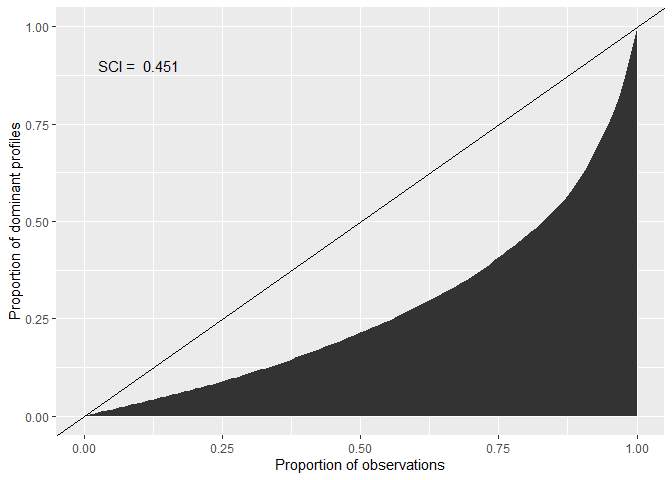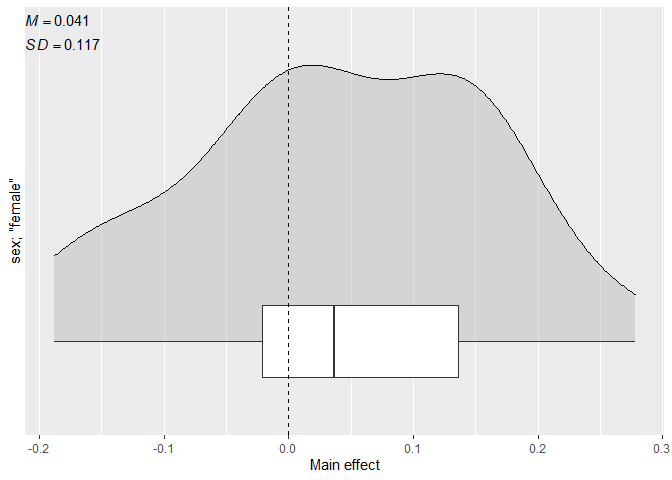cacc:
Conjunctive Analysis of Case ConfigurationsAn R Package to compute Conjunctive Analysis of Case Configurations (CACC), Situational Clustering Tests, and Main Effects
A set of functions to conduct Conjunctive Analysis of Case Configurations (CACC) (Miethe, Hart & Regoeczi, 2008), to identify and quantify situational clustering in dominant case configurations (Hart, 2019), and to determine the main effects of specific variable values on the probabilities of outcome (Hart, Rennison & Miethe, 2017). Initially conceived as an exploratory technique for multivariate analysis of categorical data, CACC has developed to include formal statistical tests that can be applied in a wide variety of contexts. This technique allows examining composite profiles of different units of analysis in an alternative way to variable-oriented methods.
To install cacc, you can run:
# Install {cacc} from CRAN
install.packages("cacc")You can also install the development version of cacc from GitHub with:
# Check if the `devtools` package needs to be installed
if (!require("devtools")) install.package("devtools")
# Install {cacc} from GitHub
devtools::install_github("amoneva/cacc")# Load {cacc} and the {tidyverse}
library(cacc)
library(tidyverse)
#> ── Attaching core tidyverse packages ──────────────────────── tidyverse 2.0.0 ──
#> ✔ dplyr 1.1.4 ✔ readr 2.1.5
#> ✔ forcats 1.0.0 ✔ stringr 1.5.1
#> ✔ ggplot2 3.5.1 ✔ tibble 3.2.1
#> ✔ lubridate 1.9.3 ✔ tidyr 1.3.1
#> ✔ purrr 1.0.2
#> ── Conflicts ────────────────────────────────────────── tidyverse_conflicts() ──
#> ✖ dplyr::filter() masks stats::filter()
#> ✖ dplyr::lag() masks stats::lag()
#> ℹ Use the conflicted package (<http://conflicted.r-lib.org/>) to force all conflicts to become errors# Explore the dataset
onharassment |> glimpse()
#> Rows: 4,174
#> Columns: 12
#> $ sex <fct> male, male, male, female, female, female, male, female, m…
#> $ age <fct> 15-17, 18-21, 18-21, 18-21, 18-21, 15-17, 12-14, 12-14, 1…
#> $ hours <fct> 4-7, 4-7, 4-7, 4-7, 4-7, 4-7, <4, 4-7, 4-7, 4-7, <4, <4, …
#> $ snapchat <fct> yes, no, no, yes, no, yes, yes, yes, no, no, no, no, no, …
#> $ instagram <fct> yes, yes, yes, yes, yes, yes, yes, yes, yes, yes, no, yes…
#> $ facebook <fct> no, no, no, yes, no, no, no, no, no, no, no, no, no, no, …
#> $ twitter <fct> yes, yes, no, yes, no, no, no, no, no, yes, no, no, no, n…
#> $ name <fct> no, yes, no, no, yes, yes, yes, yes, yes, yes, no, yes, n…
#> $ photos <fct> no, no, no, no, no, yes, yes, yes, yes, yes, no, no, no, …
#> $ privacy <fct> no, no, no, no, no, no, no, no, no, no, no, no, no, no, n…
#> $ rep_victim <fct> 0, 0, 1, 1, 0, 1, 0, 1, 1, 0, 1, 0, 0, 0, 1, 1, 1, 0, 1, …
#> $ rep_offender <fct> 0, 0, 0, 0, 0, 1, 0, 0, 1, 0, 0, 0, 0, 0, 1, 1, 1, 0, 0, …# Calculate the CACC matrix
cacc_matrix <- onharassment |>
cacc(
ivs = sex:privacy,
dv = rep_victim
)
#> Joining with `by = join_by(sex, age, hours, snapchat, instagram, facebook,
#> twitter, name, photos, privacy)`
# Look at the first few rows
cacc_matrix |> head()
#> # A tibble: 6 × 12
#> sex age hours snapchat instagram facebook twitter name photos privacy
#> <fct> <fct> <fct> <fct> <fct> <fct> <fct> <fct> <fct> <fct>
#> 1 female 15-17 4-7 yes yes no no yes yes no
#> 2 female 12-14 <4 no yes no no yes yes yes
#> 3 female 15-17 4-7 no yes no no yes yes no
#> 4 female 15-17 4-7 no yes no yes yes no no
#> 5 female 18-21 4-7 no yes no no no no yes
#> 6 female 18-21 4-7 no yes yes yes no no yes
#> # ℹ 2 more variables: freq <int>, p <dbl># Compute a Chi-Square Goodness-of-Fit Test
cacc_matrix |> cluster_xsq()
#>
#> Chi-squared test for given probabilities
#>
#> data: obs
#> X-squared = 3378.2, df = 93, p-value < 2.2e-16# Compute a Situational Clustering Index (SCI)
cacc_matrix |> cluster_sci()
#> [1] 0.4505963
# Plot a Lorenz Curve to visualize the SCI
cacc_matrix |> plot_sci()
# Compute the main effects for a specific variable value
cacc_matrix |>
main_effect(
iv = sex,
value = "female",
# Set to `FALSE` for a numeric vector of effects
summary = TRUE
)
#> # A tibble: 1 × 5
#> median mean sd min max
#> <dbl> <dbl> <dbl> <dbl> <dbl>
#> 1 0.037 0.041 0.117 -0.188 0.278
# Plot the distribution of the main effect
cacc_matrix |>
plot_effect(
iv = sex,
value = "female"
)